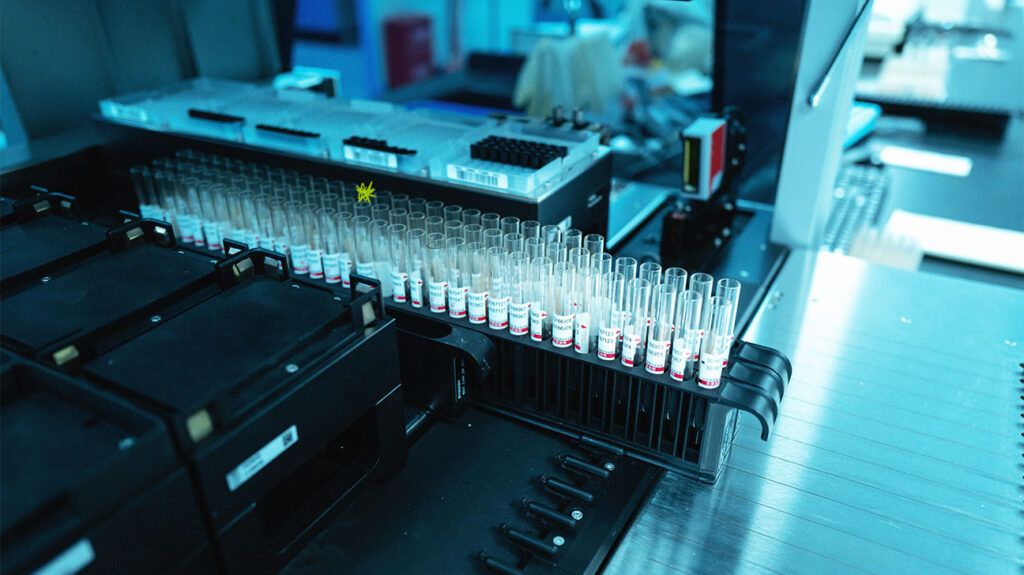A bile duct obstruction is when one of the ducts that carry bile from the liver to the intestine becomes blocked. Symptoms may include nausea and vomiting, loss of appetite, and abdominal pain.
This article explores some of the leading causes of bile duct obstruction, its symptoms, diagnosis, and treatment.

The liver produces bile, which is a liquid that contains cholesterol, bile salts, and other substances. Bile
Bile passes through the bile ducts from the liver to the gallbladder, which stores it. When necessary, it travels to the small intestine to help digest food. This network of ducts is part of the biliary system.
When one or more of the ducts that transport bile become blocked, doctors
A bile duct obstruction can lead to bile accumulating in the liver and a buildup of bilirubin in the blood.
Symptoms a person may experience can vary depending on the underlying cause of a bile duct obstruction. A person’s symptoms may come on suddenly or gradually.
Some possible symptoms
Gallstones are the
Other causes of bile duct obstruction may include:
- abdominal trauma or injury
- tumors, which may result from bile duct cancer, pancreatic cancer, or ampullary cancer
choledochal cysts , which are congenital anomalies consisting of dilated areas within the bile ducts- certain parasitic infections
- autoimmune diseases
- inflammatory conditions
- certain types of hepatitis
- liver injury resulting from the use of certain medications
- primary sclerosing cholangitis
- primary biliary cholangitis
- sarcoidosis
- abscesses
- cysts
The first step in diagnosis is a physical examination, during which a doctor will assess a person’s symptoms. They
Liver damage can cause similar symptoms to biliary obstruction, so the doctor may also ask about whether a person has ever smoked, consumed alcohol, or misused drugs.
A doctor may also order blood tests. The following results may indicate a biliary obstruction:
- higher than usual levels of bilirubin
- higher than usual levels of alkaline phosphatase
- higher than usual levels of liver enzymes
- higher than usual levels of white blood cells
Healthcare professionals may also suggest urine and stool testing.
If other tests indicate a person may have a biliary obstruction, the doctor may recommend one of the following imaging methods to confirm the diagnosis:
- abdominal ultrasound
- abdominal CT scan
- magnetic resonance cholangiopancreatography (MRCP)
- percutaneous transhepatic cholangiogram (PTCA)
- endoscopic retrograde cholangiopancreatography (ERCP)
- hepatobiliary scintigraphy (HIDA)
- endoscopic ultrasound
Treatment for bile duct obstruction aims to relieve the blockage and will
Healthcare professionals can usually remove gallstones using an endoscope during an ERCP. However, some people may still require surgery.
Someone with severe or frequent symptoms
If doctors find that the cause cancer, they may need to stretch and drain the bile ducts. Doctors may do this either using an endoscope or by placing a needle through the skin. They will likely then treat the cancer with a mix of chemotherapy and radiotherapy, depending on its type, size, and location.
Healthcare professionals may treat a parasitic infection with medications, ERCP, or surgery.
If someone has choledochal cysts, a doctor
If left untreated, bile duct obstructions
For example, if the “drainpipe” at the bottom of the liver, or the common bile duct, remains blocked, there may be a buildup of bilirubin in the bloodstream. This blockage can also lead to bacteria backing up into the liver, which can cause acute cholangitis, a severe infection.
If the blockage occurs between the gallbladder and the common bile duct, a person is at risk of cholecystitis. This refers to inflammation of the gallbladder that can lead to a severe infection or the rupturing of the gallbladder. Both of these complications of cholecystitis require emergency surgery to remove the gallbladder.
Healthcare professionals suggest that people can prevent bile duct obstructions from recurring by
A person should speak with their doctor for advice and support about any lifestyle changes they can make to prevent the risk of bile duct obstruction.
Biliary obstruction, or bile duct obstruction, describes when one of the ducts that carry bile from the liver to the intestine becomes blocked.
The
Treatment for bile duct obstruction depends on the underlying cause but may involve ERCP or surgery.
Bile duct obstruction can cause potentially life-threatening complications, if left untreated. Therefore, people should contact a doctor if they experience any symptoms of bile duct obstruction, such as pale stools, dark urine, or jaundice.
